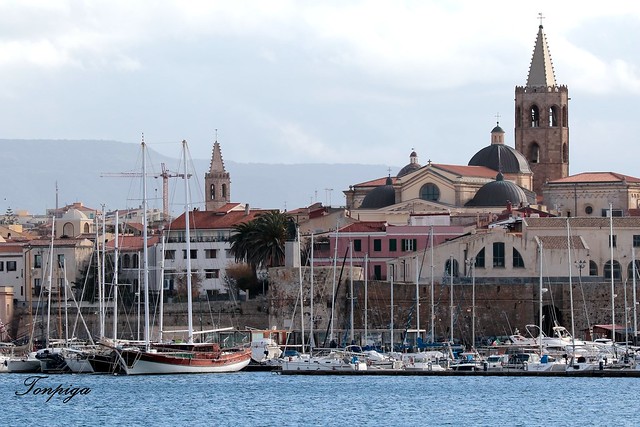Sardinia: POI, Points of Interest [part 2]
Alghero and Olbia: the two cities in Northern Sardinia that you can’t miss
Alghero: Italy’s most Catalan city

The city stands as a peculiar example of cultural promiscuity at the centre of the Mediterranean region. Founded by the Genoese nobility in the XII century, 200 years later Alghero passed under the rule of the Crown of Aragon. Being an important European dynasty, originating from the Principality of Catalonia, the Aragonese governed Alghero for more or less 4 centuries, leaving unique cultural heritage that today constitutes the heart and the should of the city.
While visiting Alghero, notice the bilingual street signs, both in Italian and Catalan, which is, by the way, still actively used by the locals. The Catalan influence in Sardinia can also be found in some peculiar architectural heritage still visible in the city of Alghero.

Make sure you don’t miss the ramparts that run along the coastline. Apart from the charming sunset views, the boardwalk of Alghero hosts medieval military artefacts: different types of metallic cannonry and gunnery, wooden trebuchets and catapults. By the way, if you are a fan or lover of the Middle Ages, you will be surprised and delighted to find abundant cannonballs (of stone?), laying in water at the base of the external walls of the fortified coastline, or even trapped in the heavy walls themselves.


The old city is fascinating. The multicoloured mosaic dome of the San Michele church has become a symbol of the city of Alghero; while San Francesco is worthwhile visiting for its amazing Catalan cloister and Gothic hexagonal bell tower. You can also dedicate some tome to the bizarre Cathedral Santa Maria, full of stylistic contrasts and different historic and cultural layers. I found it very representative of the city itself.
Sardinia’s Northeast: Olbia, a city with two names

For centuries Olbia (in local gallurese dialect called “Terranoa”) had been a poor cousin of Alghero. During the Aragonese rule over Sardinia, all the most profitable maritime traffics passed through the west coast, leaving the cities of the East underdeveloped and destitute. This had been the case of Olbia at least until the second half of the XIX century, when the Italian unification occurred and everything started to change very rapidly. The east coast of Sardinia, the one pointing towards the mainland Italy, started to benefit from the increased commercial exchange with the rest of the newly established vibrant and young Italian state.
Olbia is an extremely old city. It has conserved important signs of the ancient, pre-Christian, civilisations. In fact, Olbia hosts two fascinating monuments of the prehistoric nuragic heritage, namely Cabu Abbas and Sa Testa. In Olbia it is possible to admire the ruins of the Ancient Roman infrastructure: an aqueduct and a cistern. These ruins represent the best preserved evidence of the Roman presence in Sardinia.

If you happen to visit Olbia in summer, don’t miss it’s fresh and breezy Piazza Regina Margherita, situated on top of a hill in the very centre of the city. Then you can head for the basilica of San Simplicio, a testimony of the romanesque-pisan style in architecture. The church of San Paolo, with its decorated dome, hidden in a courtyard not so far from the above mentioned piazza can also be a pleasant surprise for any curious visitor of Olbia.

Both cities, Alghero and Olbia, are important international travel hubs. Alghero hosts the Alghero-Fertilia International Airport; while near the city of Olbia is situated a widely-known Olbia Costa Smeralda Airport, a very comfortable gate and stopover for tourists headed for the Emerald Coast, Porto Cervo and Porto Rotondo. If you happen to need an airport transfer or a limousine to or from one of these airports, here’s one of the most recommendable solutions.






